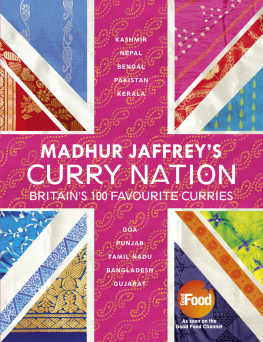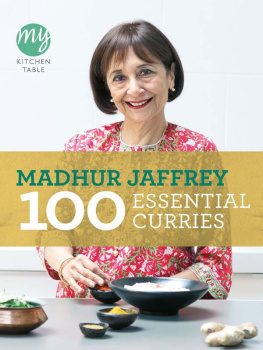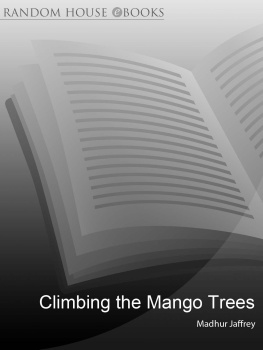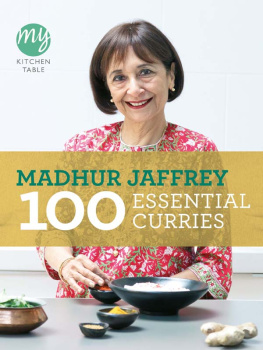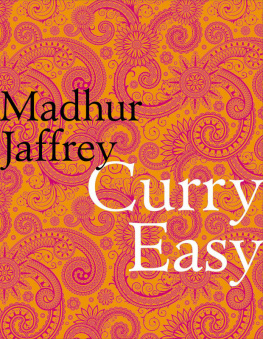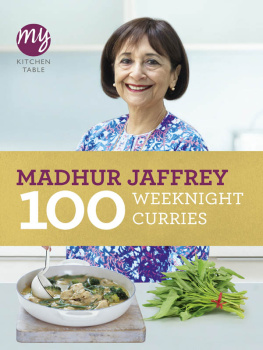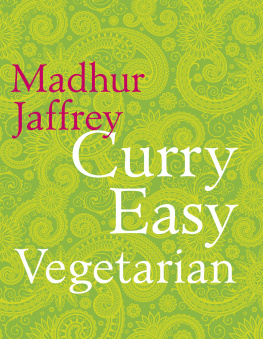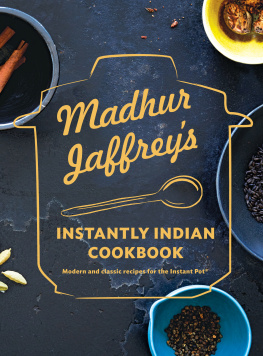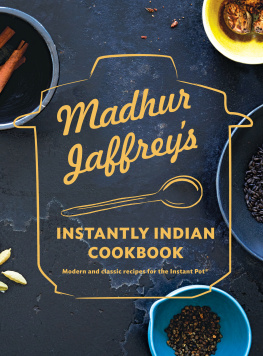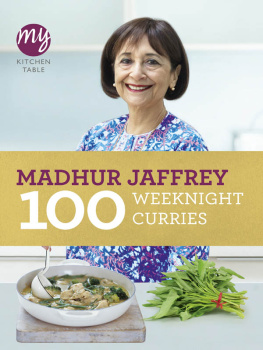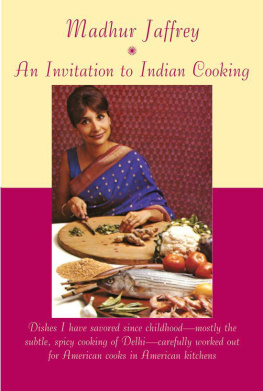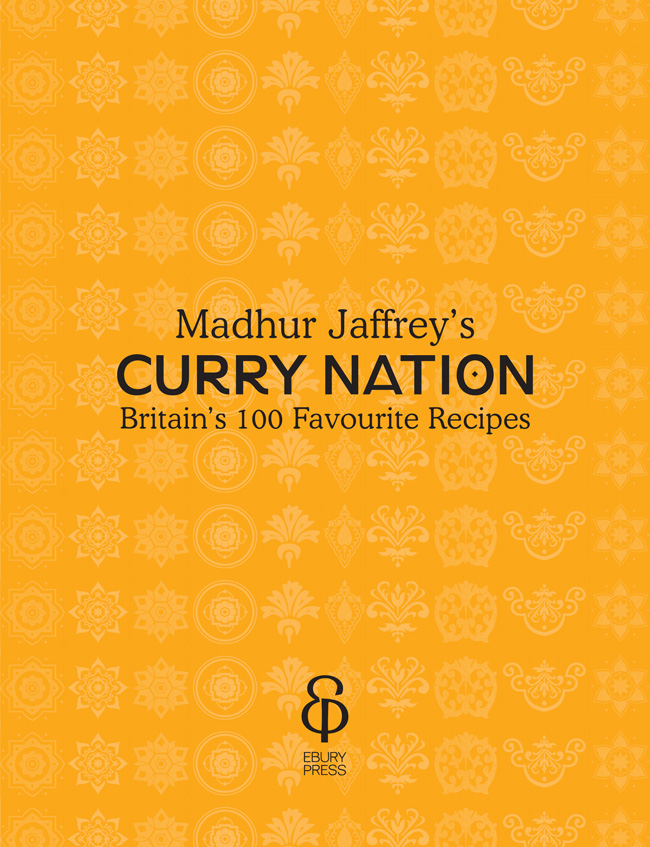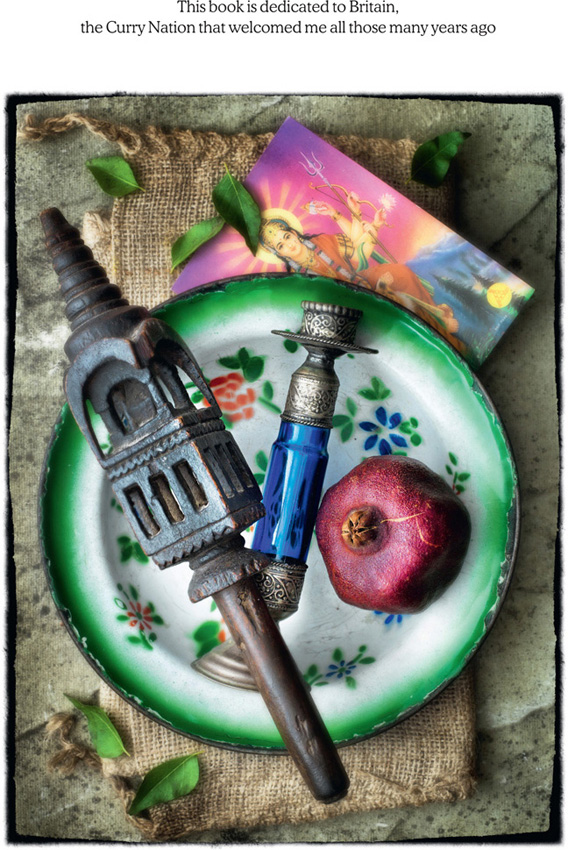Madhur Jaffrey first introduced the West to the delights of Indian food almost 30 years ago and is the authority on Indian cooking. With several hit TV series to her name, she is returning to the UK to reflect on how attitudes have changed towards her native cuisine. Her bestselling titles include Madhur Jaffreys Ultimate Curry Bible and Curry Easy.
Introduction
If Britain once colonised India, India has now returned the favour by watching spellbound as its food completely colonised Britain.
The Hindostanee Coffee House was the first Indian restaurant ever to open its doors to the British public in the early nineteenth century. Its owner, Dean Mahomed, had served under a British officer in India and followed him to Britain. The restaurant was situated on George Street, near Londons trendy Portman Square, and offered diners the comforts of the hubble bubble pipe as well as Indian dishes, in the highest perfection, and allowed by the greatest epicures to be unequalled to any curries ever made in England. It filed for bankruptcy within two short years, as it could not entice enough customers.
Shift the scene to 2012. Today there are about 10,000 Indian restaurants, employing 80,000 staff, making the industry worth 3 billion according to one source, and accounting for two-thirds of all those who dine out. Going for an Indian has become a commonplace way to spend the evening. Indian food in supermarkets alone is worth well over 600 million. This includes ready-meals and spicy sandwiches. Each Thursday night, every branch of the popular Wetherspoons pub chain turns into a Curry Club, offering a curry and a pint for a reasonable price. It sells more than 70,000 curry meals every Thursday, or 3.6 million annually.
How times have changed. The sad Hindostanee Coffee House, Britains first Indian restaurant, has now been recognised, some 200 years later, with the Mayor of Westminster unveiling a green plaque at the site. What is more, the countrys former favourite dish, fish and chips, has been replaced by chicken tikka masala, leading the former Foreign Secretary Robin Cook, in a speech celebrating Britishness, to declare, Chicken tikka masala is now a true British national dish, not only because it is the most popular, but because it is a perfect illustration of the way Britain absorbs and adapts external influences. Chicken tikka is an Indian dish. The masala sauce was added to satisfy the desire of the British people to have their meat served in gravy. Wetherspoons sells 15,000 servings of it every single week, apart from all the other curries. Marks & Spencer sells 18 tonnes of it a week. If all the chicken tikka masala served in Britain in one year was piled up, it would form a tower 2,270 times taller than the Millennium Dome.
Very recently, I was sitting in front of a mirror in Leicester being made up for a film. The make-up artist, Meinir Jones-Lewis, told me a story in her lilting Welsh accent. A friend, a Welsh actor, was visiting her in London. He wanted to go to a proper Indian restaurant, which would surely be superior to anything in Cardiff. Once there, he called the waiter and ordered a chicken vindaloo, alf and alf. The waiter looked puzzled. The actor repeated his request, slowly, more clearly and more loudly. The waiter still did not understand. The actor then turned to the seemingly dim-witted waiter and yelled, Chicken vindaloo with alf rice and alf chips! That is how some people eat it in Wales.
Britain has, indeed, adapted Indian curry to the way it wants it and this varies in different parts of the country. The meaning of the word itself has changed and evolved, in keeping both with the demands of the British people and with the changing, complex relationship between Britain and India.
This relationship started in 1600 with the formation of the East India Company. By the start of the eighteenth century, trade with India was flourishing. As it expanded and East Indiamen spread out into the Indian heartland looking for spices, saltpetre (for gunpowder), salt and indigo, they had to eat, and the only fresh food to be had was Indian. Many took to it with a passion and, in letters home, often included recipes to set out a fuller picture of their exotic lives. Those who had profited mightily from their trading returned home early with their newly acquired wealth and, sometimes, Indian servants in tow and, now designated nabobs, settled down on newly bought country estates to eat curries and prosper. If they did not have Indian servants, they had their wives and mothers cook the curries for them. When in town, they could stop at some of the coffee houses that had started serving curry meals by the late eighteenth century and have their fill of curry there.
Curries began to appear in cookery books. The first such recipe is in Hannah Glasses The Art of Cookery Made Plain and Easy, published in 1747. It is hardly a curry and more of a gravy, having just a bit of roasted coriander and black pepper in it to give it an exotic flavour and a spoonful of rice for thickening. It was as if the author could just about manage to dip a tiny part of one toe in the unknown, exotic waters. In a later edition, she removed the coriander and rather boldly added turmeric, for its colour, and some ginger! So, already, there were two types of curry in Britain, a robust, almost macho one, sometimes eaten with additional chillies and swigs of Madeira, favoured by returning all-male members of the East India Company, and the barely there version for the uninitiated.
During the nineteenth century, women began to join their men in India, running households with dozens of servants who cooked elaborate Indian meals on demand. Not a single dish was called curry by the Indians. But the British, having already borrowed the Tamil word kari, meaning sauce, for the Indian food they ate and looking for an umbrella name to cover the variety laid out on the table, began to call all the dishes curry and the entire meal curry and rice. And that seems to have stuck. Queen Victoria, who had Indian servants, seems to have enjoyed her curry, though on her menus its name was written out in French!
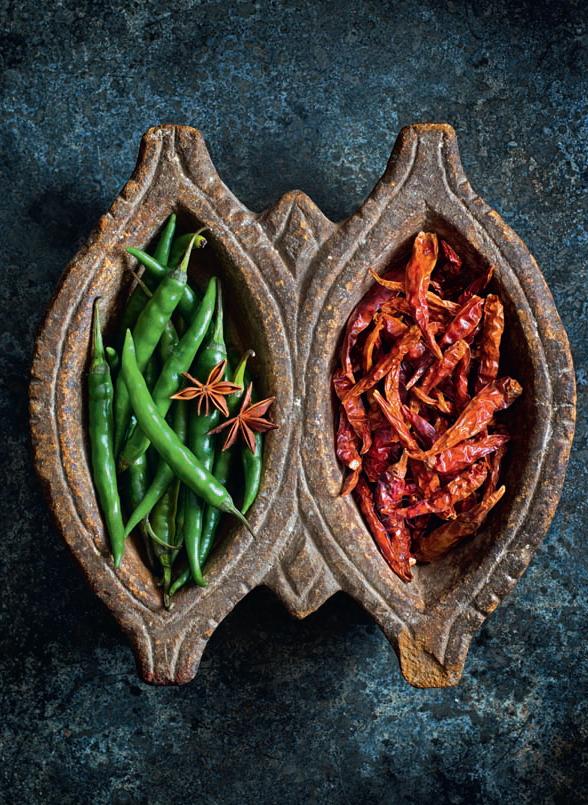
While curry eaters with fond memories of real Indian food remained, curry for the general public in the late nineteenth and early twentieth centuries had progressed slowly from Hannah Glasses minimalist recipe. During World War I, when thrift was called for, recipes appeared teaching housewives to perk up leftover roasts with sauces using curry powder, butter, milk, sour apples and lemon juice. Curry powder was king and could be added to soups, dressings, jellied veal and fish souffls.
Veeraswamys, the second major Indian restaurant to follow the Hindostanee Coffee House, opened in 1926 right off Piccadilly Circus. It was fashionable and immediately attracted royalty and nobility. By 1955, according to the

